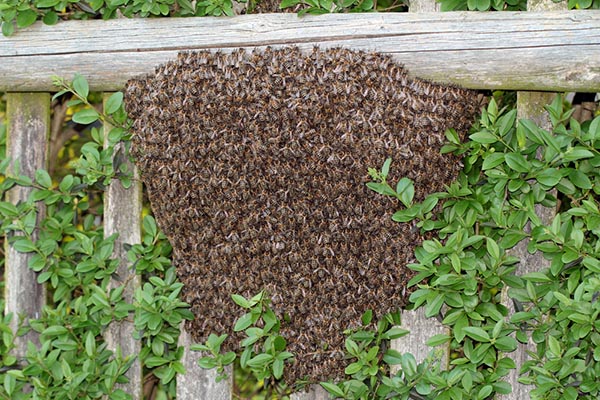What should you do if you see beehives in or around your home?

What to Do if You See a Swarm of Bees Near Your Home
If you see a swarm of bees near your home, you might be wondering how to kill a beehive. But before you take action against these buzzing insects, you should know that bees are beneficial pollinators. In fact, a large percentage of the fruits and vegetables you eat are made possible by these insects, specifically honey bees. Outright killing bees is frowned upon by the U.S. Environmental Protection Agency (EPA) and other organizations working to stop a global decline in honey bee numbers.
So what should you do if you see beehives in or around your home? Here are six steps to take:
How to Get Rid of a Beehive or Nest
1. Give the bees space.
When dealing with insects that can sting, it’s always wise to avoid provoking them. Most bee species only sting if they feel their hive or queen are threatened. Keeping your distance decreases the chances of an angry hive. A swarm of bees will typically gather on a branch, bush or post ( a doorpost, fence post, etc.), surrounding the queen. Steering clear of this area should reduce the likelihood of stings.
2. Keep pets and people allergic to stings away from bee-infested areas.
If the hive or swarm is outside, you should keep your pets, children and anyone sensitive to insect stings inside, away from the bees. If there is a beehive inside your home, try to isolate the area.
3. Figure out where the bees are coming from.
If the hive is located inside your home, try to identify where the bees entered. However, do not attempt to block access to the hive, as this could result in the bees escaping into other areas of your home.
4. Avoid using spray insecticides or traps.
It’s tempting to try to spray the hive or attempt to catch the bees inside a trap. Before you do, think about what could go wrong. Bee extermination is difficult for a number of reasons, including the fact that many commonly sold insecticides are banned for use near bees by the EPA. This means that the use of such products on bees is illegal. With traps, you wind up needing to dispose of a container full of angry insects. Moreover, if your trap isn’t successful in capturing all of the bees, the rest of the hive will remain an issue.
5. Call a professional to handle bee removal.
If the bees in your yard are honey bees, it’s likely that a local beekeeper may be able to take them off your hands at little to no cost, depending on the location of the hive or swarm. To find out if there are beekeepers in your area, check with the American Beekeeping Federation or Apiary Inspectors of America. For other bee species, or large indoor hives, getting rid of bees may require consulting a pest management professional.
6. Remove all traces of the hive and repair any damage.
Are you wondering what to do if bees are in your walls or other parts of your home like your attic? Be sure to clean up behind them. Bees in walls or cavities often leave behind honey and other residues that could attract animals and certain insects. To prevent a larger problem, be sure to get rid of any leftover honeycomb, repair damaged walls and seal the entry points bees used to get into your home.
By following these steps, you can minimize the risk of being stung and ensure that any bees stopping by your home won’t remain there for long. Bee removal shouldn’t be a solo endeavor — call an expert if you have questions.



